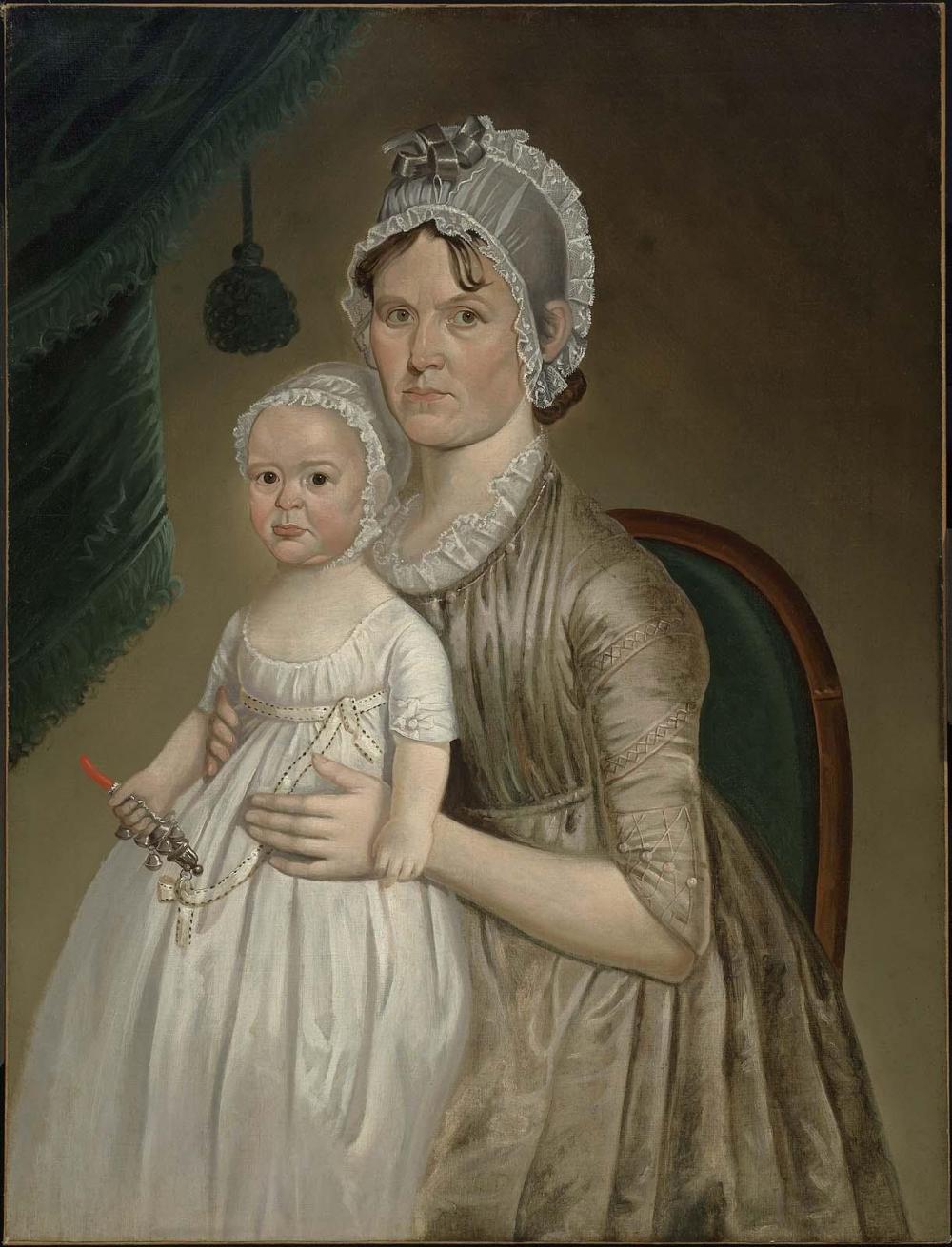Advanced Search 

Mrs. Cephas Smith, Jr. (Mary Gove) and Child
William Jennys (American, 1774–1858)
about 1803
Medium/Technique
Oil on canvas
Dimensions
106.04 x 80.33 cm (41 3/4 x 31 5/8 in.)
Credit Line
A. Shuman Collection—Abraham Shuman Fund
Accession Number1974.136
NOT ON VIEW
CollectionsAmericas
ClassificationsPaintings
An itinerant portrait painter, William Jennys traveled throughout New England seeking commissions. In 1803, he was in Rutland, Vermont, where the prosperous attorney Cephas Smith, Jr., hired him to paint portraits of himself [1974.135] and his young wife and child. The portraits were among Jennys’s most ambitious works. Although he was known for small half-length likenesses, here he returned to a larger three-quarter-length format. These had been popular in the materialistic 1760s and 1770s because the bigger canvases allowed for the inclusion of furnishings, draperies, and other indications of wealth.
In the related portrait of Mr. Smith, the sitter poses at his writing desk, pen in hand, demonstrating that he is a successful man of affairs. Here, his wife is shown seated in a matching chair, holding an infant in her lap—either Egbert, the Smiths’ second child, or Mary, their third. The infant holds a coral and bells, an expensive yet essential item of child-rearing equipment. The sparkling silver bells amused the baby, while the coral, parents believed, guarded against disease. In the eighteenth century, teething was considered as dangerous as diphtheria. Biting on coral would ease the discomfort of teething. Coral was also believed to have talismanic powers, warding off ailments and dangers. The rattle was thus not just a toy but a device to protect children and promote their development.
This text was adapted from Carol Troyen and Janet L. Comey, Amerikakaigakodomo no sekai [Children in American art], exh. cat. (Nagoya, Japan: Nagoya/Boston Museum of Fine Arts, 2007).
In the related portrait of Mr. Smith, the sitter poses at his writing desk, pen in hand, demonstrating that he is a successful man of affairs. Here, his wife is shown seated in a matching chair, holding an infant in her lap—either Egbert, the Smiths’ second child, or Mary, their third. The infant holds a coral and bells, an expensive yet essential item of child-rearing equipment. The sparkling silver bells amused the baby, while the coral, parents believed, guarded against disease. In the eighteenth century, teething was considered as dangerous as diphtheria. Biting on coral would ease the discomfort of teething. Coral was also believed to have talismanic powers, warding off ailments and dangers. The rattle was thus not just a toy but a device to protect children and promote their development.
This text was adapted from Carol Troyen and Janet L. Comey, Amerikakaigakodomo no sekai [Children in American art], exh. cat. (Nagoya, Japan: Nagoya/Boston Museum of Fine Arts, 2007).
ProvenanceAbout 1803, Mr. Cephas Smith, Jr. (1760-1815) and Mary Gove Smith (Mrs. Cephas Smith, Jr., 1775-1831), Rutland, Vermont. By 1955, descended in the family of the sitter to Harriet Chase Benedict (Mrs. Grenville Benedict, 1903-1984), Providence, R. I.; 1974, consigned by Harriet Chase Benedict to Childs Gallery, Boston; 1974, sold by Childs Gallery to the MFA. (Accession Date: March 13, 1974)
